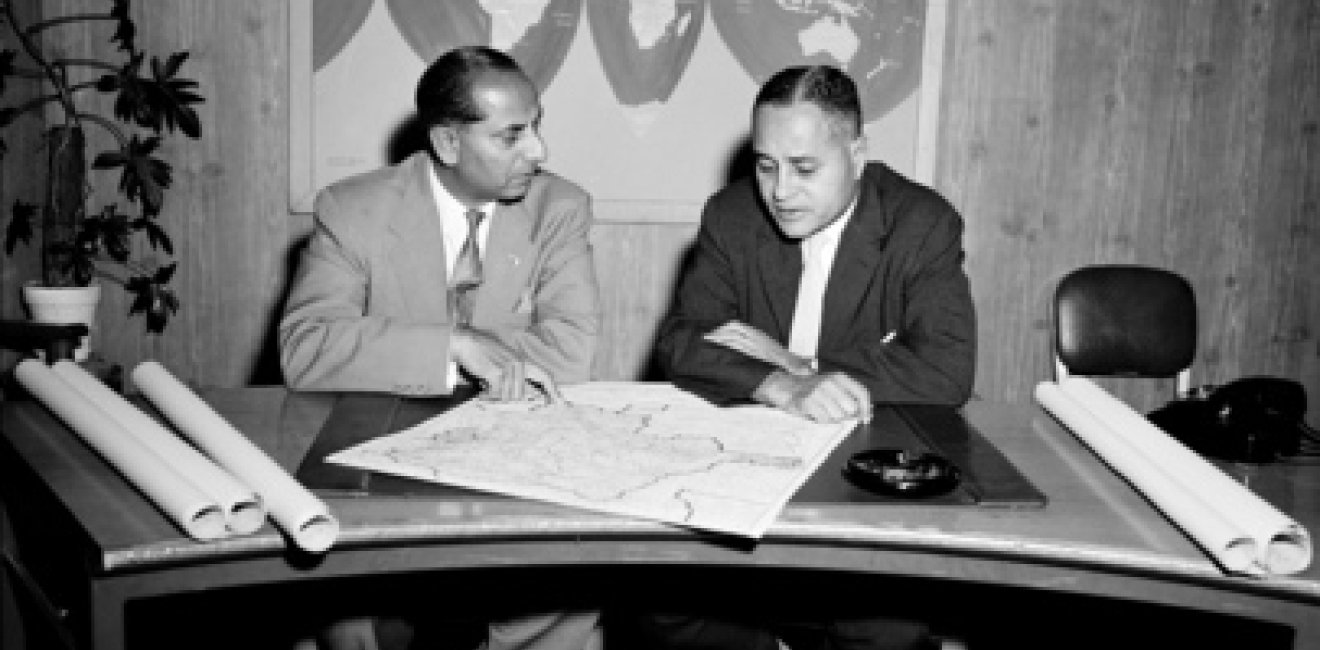Rajeshwar Dayal, former Indian Foreign Secretary, played an important role in two UN missions, one in Lebanon in 1958 and the other in the Congo in the early 1960s. Dayal’s notes and correspondence regarding these assignments can be found in the Cordier Papers and in the fonds pertaining to the missions in the UN archives.
Although not as organized as his papers, memos can also be found in the files pertaining to these crises in the Indian Ministry of External Affairs archives (National Archives of India, New Delhi) and in the collected papers of other senior Indian foreign service officers of the time, particularly the foreign secretaries he was reporting to, Subimal Dutt and MJ Desai (Manuscripts Division, Nehru Memorial Museum and Library, New Delhi). Dayal also wrote two books about his assignments with the United Nations. The first, Mission for Hammarskjöld dealt solely with Dayal’s role in the peacekeeping mission in the Congo in the 1960s. His second was a more comprehensive autobiography called A Life of Our Times.
Most of the papers mentioned above deal with Dayal’s time in the Congo, which being a more protracted conflict, has more archival material for historians to go through. In a forthcoming paper, I deal with this crisis and India’s role in the peacekeeping efforts launched by the UN there. The crisis in the Lebanon, though, has less material devoted to it, primarily because it was short-lived but also because it was previously regarded as largely unimportant in Indian diplomatic history. That is why we jump straight from the twin conflicts of the Hungarian Revolution and the Suez Canal Crisis in 1956 to the crisis in the Congo in the 1960s while discussing Indian histories of international conflicts, especially those with an added dimension of peacekeeping.
In reading Dayal’s notes, however, and particularly Hammarskjöld’s papers, I was able to trace an arc where Dayal’s work in the Lebanon affected not only his individual stature within the UN, but also greatly elevated India’s role in UN mediation processes. I began looking for a needle in a haystack following Dayal's notes on Indian peacekeeping in the Lebanon, and it led to the treasure trove that I then attempted to relay in my paper, ‘In the very eye of the storm’: India, the UN, and the Lebanon crisis of 1958’, published in the latest issue of Cold War History.
As both my papers have relied heavily on Dayal’s own notes as well as notes about him, researching them has led to a collection of authors’ and contemporaries’ views about him. He seems to have been at once hated by the Americans, supported by Nehru and Hammarskjöld, and reviled by certain factions of the Lebanese and Congolese.
The Americans seem to have held the view that Dayal possessed what they called ‘high-caste Indian disdain for the blacks,’ so much so that Adlai Stevenson, convinced that no progress would be made in the Congo while Dayal was still present there, insisted that Dayal was exhausted and refused to address any matter other than a long vacation. Dayal himself knew the Americans believed he was a communist, a view not quite shared by the Soviets, who wanted Dayal relieved of his post for not being communist enough! This caused great consternation in Dayal, who, already frustrated by the ‘dialogue des sourds’ or a dialogue of the deaf, preferred to justify the UN’s actions at every turn.
Historians have referred to Dayal as ‘an Indian diplomat of unusual perspicacity’ and ‘the sharpest observer in the Congo’. Yet, perhaps the most crucial element in international diplomacy was pointed out by The New York Times that reported from the UN headquarters in New York in September 1960, at the height of the Congo crisis that Dayal was ‘regarded by diplomats here as a man of supreme patience’.
Clearly, Dayal seems to have roused extreme emotions in the people with whom he came in contact, not a trait often found in career diplomats. But these appraisals of Dayal also point to larger attitudes adopted towards Indians in general and Indian diplomacy more specifically. The chronicle of superpower efforts at stalling Indian mediatory efforts in crises through the 1950s and well into the 1960s despite the successes that Indian methods met with in Korea and Indochina is astonishing. As Indian diplomatic history is written through the Indian archive, and constituted as a subject in itself, more such figures and their narratives will become central to those international histories.






